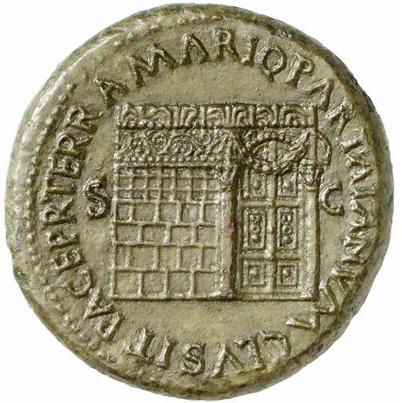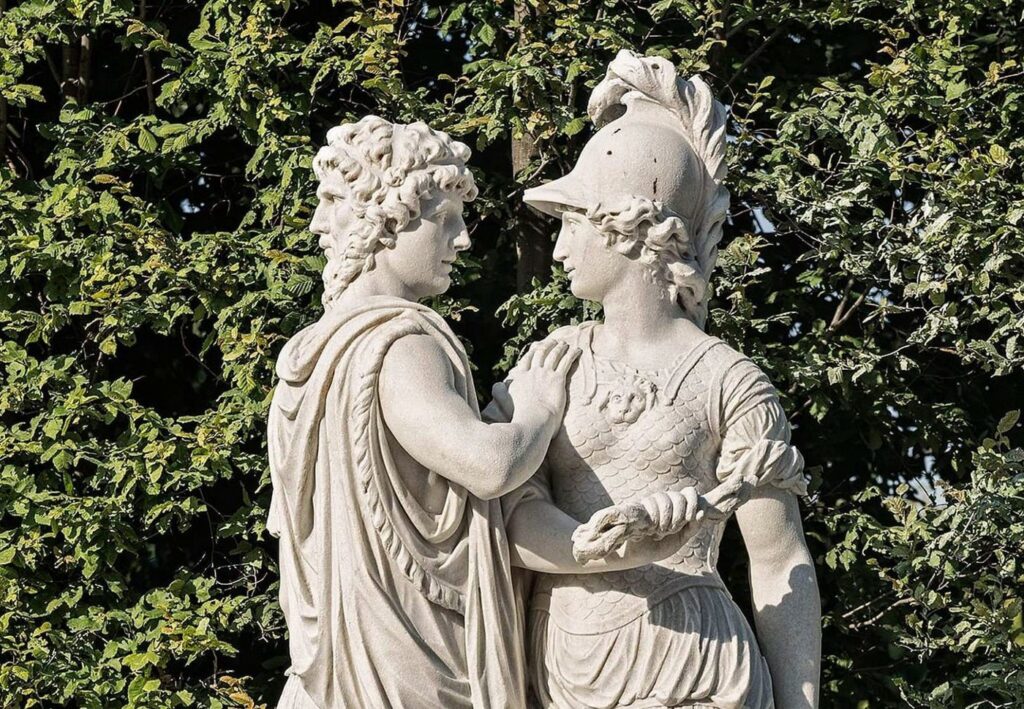by Ed Whelan, Contributing Writer, Classical Wisdom
We all know January is the first month of the year. Many may even know the month is named after the Roman god Janus. Yet what do we know about this mysterious, two-headed figure?
Janus was the god of entrances, thresholds, and transition. Yet unlike many other Roman gods, which had Greek counterparts (the Roman Venus and the Greek Aphrodite, for instance) Janus was a god that was unique to the Romans. An understanding of this god, therefore, can help us to understand the Romans more distinctly.
What are the Origins of Janus?
Janus was probably an Indo-European deity and possibly of Etruscan origin. The name Janus probably comes from the old Latin word for entrance. The worship of this god was especially important in the public religion of Rome. Rites and ceremonies were held in his honor, and they were overseen by the priest known as the ‘King of the Sacred.’ The Romans believed that he was one of the first Kings of Rome, but even they knew little about him and his cult was very mysterious.
What was Janus’ role in Roman myth?
In the fragmentary myths that have survived, he was the embodiment of change and transformation. He is described in some sources as a creator deity who attended the birth of the Roman Gods, such as Jupiter. In another ancient account, Janus arrived in Italy by ship, and was a God of agriculture. Janus was often shown to be the assistant of Saturn and helped him to create a Golden Age. In some, sources he married a nymph, and their son was Tiberinus, after whom the River Tiber was named. The deity of transition was also responsible for the calendar.
The Worship of Janus
The worship of the god was thought to derive from the time of Romulus. There were many ceremonial gateways in Rome, known as Jani. They were seen as auspicious for entrances and leave-takings. Good or bad luck became attached to a person or army as they moved through these gateways. The most famous gateway in Rome was the Janus Geminus. This was the most important shrine dedicated to Janus. A temple on the Janiculum hill was believed to be the place where the god resided, but this temple has never been found by archaeologists. It was a square bronze structure with two doors, one closed inward and the other outwards. This was regarded as the symbolic threshold for first the Roman Republic and later the Empire.
The Romans believed that they should be kept closed in times of peace and open in times of war. The war-like Romans rarely closed the gates for an extended period. They were closed by Augustus and Nero, who used it for propaganda purposes in the First Century AD. The Salii priests would close and open the doors. In the early Roman Republic this would signify the beginning or end of the season for war. In ancient agricultural societies, this was only conducted during the Spring and Summer. The citizens of the Eternal City believed that Janus oversaw the start and end of wars but was not technically a ‘god of war’.
Janus evolved over time, and he was also associated with travel, trade, and sailing. Many merchants celebrate the cult of Janus as a result. Janus was also summoned at the beginning of any public ceremony, such as the Senate opening. He was also honored at significant moments in life, for example weddings, births, and the harvest. Private citizens would seek Janus’ protection as they crossed the threshold in his home. In myth and art, the god was shown as bearded and having two faces looking different ways. This expressed the liminal nature of this enigmatic deity.
Janus and the New Year
Janus was associated with the calendar and time. His association with transitions meant that he was often seen as a god of time. Janus was especially associated with celebrations around the New Year in mid-winter. Janus’ main feast was seemingly on January 9th, although a number of scholars dispute this. The god was believed to oversee the transition from one year to the next. Because of this, the Romans named the first month in their calendar after him. Later cultures adopted the Roman calendar and took over several of their month’s names. Today the month of January is named after the mysterious Janus.
The end of Janus
The Janiculum was eventually converted into a Christian Church. It seems that small groups of pagans continued to worship the god and during the Gothic Wars (sixth century AD), the doors of Janus were opened again. There were several medieval scholars who believed that witches and wizards worshipped Janus in their ceremonies.
Janus and Roman Religion
Janus has no real equivalent in Greek religion, and he is a uniquely Roman god. They worship him because they were preoccupied with the principles of transformation and transitions. The various cults dedicated to Janus were all thought by Romans to help to ensure that any transitions were not dangerous and hazardous. In particular, Romans sought his help to ensure that the transition from peace to war, and war to peace were successfully managed.
Conclusion
Janus offers us an insight into the worldview of the Romans. He was worshipped because he helped them to control changes and transitions and allowed them to understand time and the nature of the world. For the average Roman, the god personified important forces that that he wanted to control. In particular Janus was associated with the successful commencement and conclusion of war, which was critical for the martial Romans.
As a figure representing thresholds and transitions, there’s perhaps no more fitting legacy than inspiring the name of the year’s first month.
Further Reading
Ferguson, John (1985). The religions of the Roman Empire. Cornell, CA: Cornell University Press.












One comment
The uniqueness of Janus is very interesting. Great article to start off a new year. Happy 2775th New Year!
Trackbacks
Our apologies, you must be logged in to post a comment.